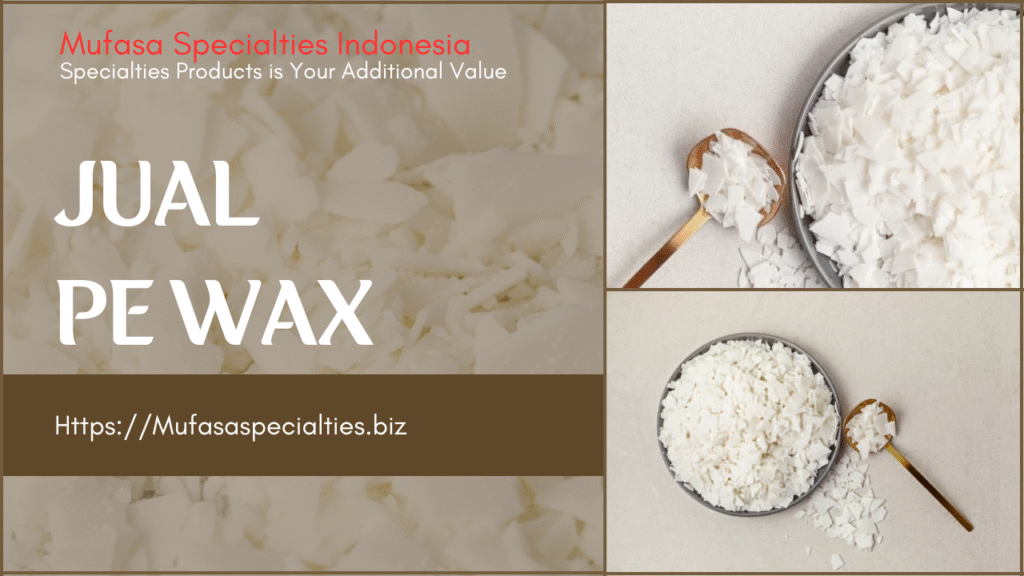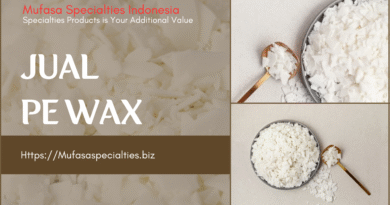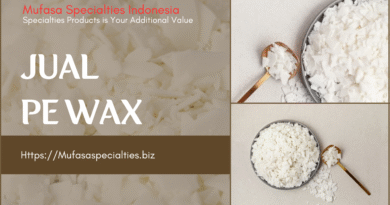
Supplier PE Wax
Road safety remains a paramount concern for municipalities, government bodies, and private infrastructure developers. Indeed, a key component in ensuring road safety is the visibility of lane markings, directional arrows, pedestrian crossings, and other signals conveyed through road markings. To ensure their durability and clarity, road marking paints must meet strict performance criteria. One of the most important additives used to meet these requirements is Polyethylene Wax ( Supplier PE Wax ).
Specifically, Polyethylene Wax, a low molecular weight polyethylene polymer, is widely used across various industrial applications. In particular, in the formulation of road marking paints, it enhances performance in several essential ways. From improving abrasion resistance to facilitating better dispersion, PE Wax proves its value in every formulation stage. Therefore, this article delves deep into the chemistry, functionality, and benefits of PE Wax in road marking applications, helping formulators, procurement teams, and manufacturers make informed decisions.
The Role of Supplier PE Wax in Road Marking Paints: Applications, Benefits, and Industry Insights
PE Wax is a synthetic wax derived from polymerized ethylene. Generally speaking, it typically exists in two major forms: low-density polyethylene (LDPE) and high-density polyethylene (HDPE) waxes. These can be further classified into:
-
Oxidized PE Wax
-
Non-oxidized PE Wax
-
Micronized PE Wax
Each of these types, while chemically similar, has slightly different physical and chemical properties, enabling formulators to select the most suitable grade depending on their specific paint formulation.
Key physical properties include:
-
Melting Point: Typically ranges between 95°C to 140°C
-
Density: Usually lies between 0.91 g/cm³ to 0.98 g/cm³
-
Hardness and Abrasion Resistance: Important for durability under vehicular traffic
-
Low Coefficient of Friction: Enhances slip and reduces wear
Case Study: Successful Integration in Thermoplastic Paint
In a Southeast Asian country with high vehicle density and tropical climate, a paint manufacturer reformulated its thermoplastic road marking paint by incorporating oxidized PE Wax at 3.5% by weight.
Observed Results After 12 Months:
-
20% reduction in paint reapplication costs
-
Enhanced gloss retention during rainy seasons
-
Improved night visibility due to better pigment dispersion
-
Fewer complaints from transportation departments about fading or wear
This success was achieved in collaboration with a local Supplier PE Wax, who provided tailor support from product selection to field performance validation.
Road Marking Paints: Overview and Classification
Road marking paints are typically thermoplastic or solvent-based, and occasionally waterborne. Because these paints must endure harsh environments, they are engineered to withstand extreme weather conditions, vehicular abrasion, and UV exposure.
Types of Road Marking Paints
-
Thermoplastic Road Marking Paints
These are heated and applied in molten form, offering strong adhesion and durability. Importantly, PE Wax plays a significant role in these systems. -
Solvent-Based Paints
These use organic solvents as carriers and are quick-drying but may be less environmentally friendly. However, their rapid curing time makes them suitable for certain traffic zones. -
Waterborne Paints
A more sustainable choice, using water as the carrier, though they may require additives like PE Wax to boost performance. -
Two-Component Systems
Often epoxy- or polyurea-based, they offer premium performance and long-term durability. Nevertheless, they are usually more expensive.
Industry Applications Beyond Highways
While highways and roads are the primary markets for PE Wax-based markings, other areas also benefit:
-
Airport Runways: Require extreme durability under aircraft pressure
-
Parking Lots: Need anti-slip and high-gloss properties
-
Factory Floors: Use markings for safety and organization
-
Bicycle Lanes: Require visibility and weather resistance
These applications often rely on a Supplier PE Wax who can customize wax characteristics to meet niche performance needs. Thus, the scope of PE Wax extends well beyond traditional road infrastructure.
Functions of PE Wax in Road Marking Paints
Incorporating PE Wax into road marking paints offers a range of advantages, which are detailed below:
1. Abrasion Resistance
PE Wax imparts excellent hardness and wear resistance. Road markings are constantly exposed to vehicular traffic, tire scuffing, and other mechanical actions. Therefore, a durable marking must resist wear, and PE Wax helps achieve that by forming a hard, resilient surface layer.
2. Flow and Leveling Enhancement
Moreover, PE Wax improves the flow and leveling characteristics of the paint, ensuring uniform application. Smooth flow is crucial, especially when applied by automated machines.
3. Improved Pigment Dispersion
Proper pigment dispersion is essential for visibility. PE Wax aids in uniformly dispersing pigments such as titanium dioxide or iron oxides, ensuring optimal opacity and brightness. As a result, road markings remain vivid and reflective.
4. Anti-Settling and Anti-Separation
Over time, road marking formulations may suffer from settling of heavier particles. PE Wax helps to stabilize the composition, minimizing the risk of pigment or filler separation during storage or transportation. This ensures consistent quality from factory to field.
5. Slip Resistance
Road markings must not only be visible but also safe to walk or drive over. PE Wax creates a micro-textured surface that balances anti-slip properties while retaining reflectivity. Hence, it serves a dual function—safety and durability.
6. Weather and UV Resistance
Road markings are exposed to sunlight, rain, temperature fluctuations, and pollution. PE Wax contributes to the formulation’s UV resistance, slowing down degradation caused by solar exposure. Consequently, the paint remains intact for longer durations.
7. Enhancement of Gloss and Appearance
A crisp, reflective finish improves visibility—especially at night. PE Wax enhances surface gloss and brightness, particularly when used in thermoplastic paints. Indeed, visual performance is significantly elevated.
Environmental Considerations
As governments and industries shift toward eco-friendly materials, PE Wax—especially in its oxidized and bio-based forms—is gaining traction. In this context, oxidized PE Waxes offer better compatibility with waterborne systems, making them ideal for sustainable road marking solutions.
Additionally, manufacturers are exploring bio-based PE Wax options derived from renewable ethylene. A trustworthy Supplier PE Wax partner will often carry green-certified alternatives that meet evolving environmental regulations without compromising performance.
Application Methods and Processing
PE Wax is typically added to road marking paints during the blending or melt stage, depending on the paint type. For thermoplastic paints, it is often blended in molten form alongside resins, fillers, and glass beads.
The following are typical processing guidelines:
-
Use temperatures between 180–220°C for thermoplastics
-
Disperse with high-shear mixers for solvent or water-based systems
-
Optimize dosage levels (typically 1–5% by weight depending on the formulation)
Selection Criteria for PE Wax
When choosing a PE Wax grade for road marking applications, manufacturers and formulation specialists should consider the following:
-
Melting Point: Higher melting points ensure better heat resistance
-
Molecular Weight: Affects the hardness and compatibility with other resins
-
Polarity: Oxidized PE Waxes are more compatible with polar systems like acrylics
-
Particle Size: Micronized waxes improve dispersion and surface texture
Furthermore, a reputable Supplier PE Wax will often provide technical data sheets and formulation support. This is essential, particularly when customizing paint systems for varying regional climates and regulatory frameworks.
Performance Benefits Validated by Industry Studies
Several comparative studies in road marking performance have validated the effectiveness of PE Wax. For example, when included in thermoplastic markings:
-
Wear resistance improved by up to 25%
-
Color retention was higher after 6 months of weather exposure
-
Reflectivity remained within 90% of original levels even after 3,000 vehicle passes
These metrics underscore the importance of PE Wax in achieving regulatory compliance and long-term cost savings. Notably, all these advantages were realized without increasing the overall raw material cost significantly.
Innovations in PE Wax Technology
Recent advancements in wax technology have focused on:
-
Micronized grades for finer dispersion
-
Functionalized PE Waxes with carboxyl or hydroxyl groups
-
Cross-linked PE Waxes for extreme abrasion resistance
Collectively, these innovations help paint manufacturers enhance their formulations, creating road markings that last longer, look better, and resist environmental wear.
Key Considerations When Choosing a Supplier
Choosing the right Supplier PE Wax is critical to the success of your road marking product. To make an informed decision, consider these factors:
-
Quality Consistency
Look for ISO-certified production processes and tight QA/QC protocols. -
Technical Support
The supplier should provide formulation advice and lab testing capabilities. -
Supply Chain Reliability
On-time delivery, local warehousing, and backup supply chains are crucial. -
Regulatory Compliance
Ensure the PE Wax complies with local and international environmental standards. -
Cost-Effectiveness
Competitive pricing must balance with consistent quality and technical support.
A dependable Supplier PE Wax will be able to deliver not just materials, but solutions—tailored to your operational, technical, and environmental needs.
Conclusion
In the highly demanding world of road marking, durability, visibility, and safety are non-negotiable. PE Wax delivers on all fronts—enhancing abrasion resistance, facilitating better dispersion, improving flow, and even contributing to environmental sustainability.
Overall, with the evolving landscape of road construction, smart cities, and sustainable materials, the role of PE Wax in marking systems will only grow. Whether you are reformulating an existing product or launching a new paint system, working with a reliable Supplier PE Wax is the foundation of long-term success.
In conclusion, by understanding its properties, functions, and application techniques, manufacturers and contractors can elevate the performance of road markings, ensuring safety and visibility for all road users.

